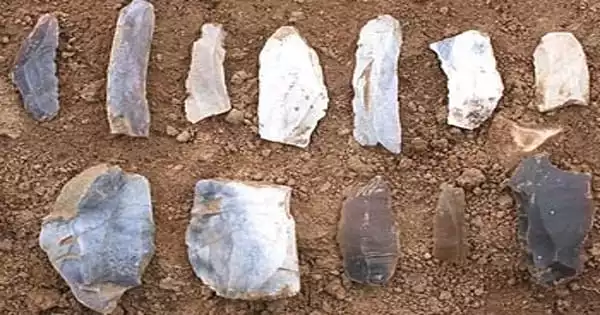An African man who lived only 350 years ago was discovered buried in a prehistoric shell midden in Amoreira, Portugal. This was very surprising because archaeologists know Amoreira and other midden sites in the Muge region for the cemeteries of the last hunter-gatherers who lived in the area 8,000 years ago. To investigate this burial, researchers from Uppsala University and Universidade de Lisboa used biomolecular archaeology, ancient DNA, and historical records.
We were able to determine that these were the remains of a first-generation African, most likely from Senegambia, who arrived in Portugal via the Trans-Atlantic Slave Trade and died between 1630 and 1760. His genetic signature indicates African ancestry, and dietary isotope analysis reveals that for the majority of his life, he ate plant foods common in Senegambia but not in Portugal at the time, as well as a minor consumption of low trophic level marine foods (such as bivalve molluscs). The oxygen isotopic signal in bone bioapatite reflects the ingested water at the point of origin, which could be narrowed to western African coastal areas such as Mauritania, Senegal, and Gambia.
For more than three centuries, Africans have been brutally removed from their homeland and forced to adopt a new religion, a new name, and a new language. African communities in Portugal developed strategies to preserve their socio-cultural identity and values, similar to what has been documented in the Americas.
We used our findings to look for additional clues that could help us understand the reasons for his unusual burial. The burial of this man in an 8,000-year-old site could be an example of African people translocated to Europe maintaining African cultural beliefs and practices, even though this particular practice is not documented in historical records.
Researchers from Uppsala University and Universidade de Lisboa
We used our findings to look for additional clues that could help us understand the reasons for his unusual burial. The burial of this man in an 8,000-year-old site could be an example of African people translocated to Europe maintaining African cultural beliefs and practices, even though this particular practice is not documented in historical records. Given the abundance of animal and human bones at the site, Amoreira, like many other archaeological sites, was most likely known by local populations as an ancient burial ground.
This grave appears to have been prepared with a layer of sand, indicating some level of preparation for a burial in an apparently deviant location; in Portugal, from the Middle Ages to the mid-nineteenth century, the dead were generally buried in religious grounds, but this one was not.

We discovered that, interestingly, shell middens are still actively used in western Africa today. The use of shell middens in Senegambia, in particular, includes both ancient and modern cemeteries. The burial of this individual in a Portuguese shell midden could indicate that the African community of Amoreira recognized the site as a meaningful place, possibly according to West African socio-cultural traditions. In fact, non-Christian funerary practices have been discovered in a cemetery for enslaved people in the Canary Islands. Future investigations may reveal whether this was a one-off occurrence or part of a larger trend.
We attempted to identify this person and discovered a document from the local church dated November 1st, 1676, which mentions the murder of a young man named Jo at Arneiro da Amoreira, which is exactly where the bone remains were discovered. The church registers, however, state that the victim was buried in the churchyard, whereas the bones we discovered were buried at Amoreira.
Furthermore, the murdered man is described as brown or dun, implying that he was interracial, but our findings show that both his mother and father were of African ancestry. It is unknown whether the confluence of the described murder site and our studied bone remains is a mere coincidence or the result of historical records’ incompleteness, lack of detail, or even accuracy.
Despite the incompleteness of the human remains and historical records, the convergence of several lines of inquiry allowed for the reconstruction of specific aspects of the life and death of a first-generation African individual in Portugal during the Trans-Atlantic Slave Trade period that would not have been possible to examine from the archaeological context. More importantly, it demonstrates the importance of conducting multidisciplinary research to investigate individual African life histories in Early Modern Europe that have been obscured by large-scale studies.





